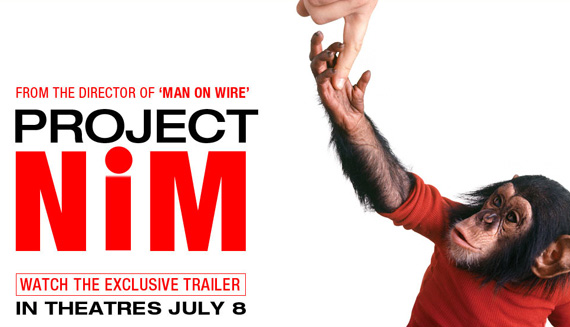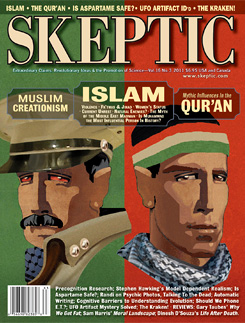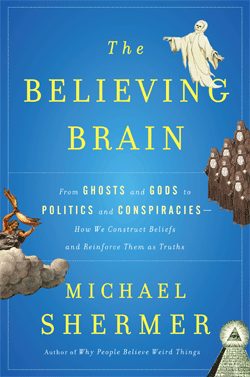Folk-Wisdom Medicine versus Science-Based Medicine
This article first appeared as an alternative medicine opinion editorial for the American Medical Associations’s Virtual Mentor Journal, Volume 13, Number 6: 389–393, June 2011.
For many years now there has been considerable debate between so-called complementary and alternative medicine (CAM) and mainstream science-based medicine. In reality there is no debate because there is only science-based medicine and everything else that has yet to be tested. Most of CAM falls into this latter category. This does not automatically mean that all CAM claims are false; only that most of them have yet to be tested through the rigorous methods of science, which begins with the null hypothesis that holds that the hypothesis under investigation is not true (null) until proven otherwise. A null hypothesis states that X does not cause Y. If you think X does cause Y then the burden of proof is on you to provide convincing experimental data to reject the null hypothesis.
The statistical standards of proof needed to reject the null hypothesis are substantial. Ideally, in a controlled experiment, we would like to be at least 95–99 percent confident that the results were not due to chance before we offer our provisional assent that the effect may be real. Everyone is familiar with the process already through news stories about the FDA approving a new drug after extensive clinical trials. The trials to which they refer involve sophisticated methods to test the claim that Drug X (say a statin drug) improves outcomes in Disease Y (say cholesterol-related atherosclerosis). The null hypothesis states that statins do not lower cholesterol and thus have no effect on atherosclerosis. Rejecting the null hypothesis means that there was a statistically significant difference between the experimental group receiving the statins and the control group that did not.
In most cases CAM hypotheses do not pass these simple criteria. They have either failed to reject the null hypothesis, or they haven’t even been rigorously tested to know whether or not they could reject the null hypothesis.
What, then, is the pull of CAM for so many people? According to a 2002 survey of U.S. adults conducted by the National Center for Health Statistics and the National Center for Complementary and Alternative Medicine: 74.6% had used some form of complementary and alternative medicine, 14.8% “sought care from a licensed or certified” practitioner, suggesting that “most individuals who use CAM self-prescribe and/or self- medicate,”1 and that the most common CAM therapies used were prayer (45.2%), herbalism (18.9%), breathing methods (11.6%), meditation (7.6%), chiropractic (7.5%), yoga (5.1%), body work (5.0%), diet-based therapy (3.5%), progressive relaxation (3.0%), mega-vitamin therapy (2.8%), and visualization (2.1%).2
A 2004 survey of 1,400 U.S. hospitals found that over 25% offered such alternative and complementary therapies as acupuncture, homeopathy, and massage therapy. According to researchers Sita Ananth of Health Forum, an affiliate of the American Hospital Association, and William Martin, PsyD, of the College of Commerce at DePaul University in Chicago, in a news release: “More and more, patients are requesting care beyond what most consider to be traditional health services. And hospitals are responding to the needs of the communities they serve by offering these therapies.”3
Herein lies one answer to understanding why CAM sells. There is a market demand for it. Why? One possibility is that people are turning to alternative medicine because their needs are not being met by traditional medicine. As the late medical historian Roy Porter was fond of pointing out, before the 20th century this certainly was the case.4 Medical historians, in fact, are in agreement that until well into the 20th century it was safer not to go to a doctor, thus leading to the success of such nonsense as homeopathy—a totally worthless nostrum that did no harm, thus allowing the body to heal itself. Since humans are pattern-seeking animals we credit as the vector of healing whatever it was we did just before getting well. This is also known as superstition, or magical thinking.
Another explanation may be found in examining what CAMers are offering that mainstream physicians are not: TLC. By this I do not just mean a hand squeeze or a hug, but an open and honest relationship with patients and their families that provides a realistic assessment of the medical condition and prospects. People are going alternative because in too many instances physicians have become highly skilled technicians—cogs in the cold machinery and massive bureaucracy of modern HMO medicine.
I witnessed the effect directly over the course of a decade during my mother’s recurring and malignant meningioma brain tumors. She finally succumbed, but in the process I gained a deeper understanding of why people turn to alternative medicine. Don’t get me wrong—my mother’s doctors were brilliant, her care the very best available, and we have no regrets about what might have been. And that’s the point. Even under such ideal conditions I found the whole experience frustrating and unfulfilling: it was nearly impossible to get honest and accurate information about my mom’s condition; neither my father nor I could get doctors to return our calls; misinformation and (usually) no information was the norm; and despite my best efforts, the relationship with her physicians (with one exception—her oncologist whom I befriended), could not have been more detached.
I found it rather telling, for example, that when I identified myself as “Dr. Shermer” I got faster results at the hospital than when I was merely “Mr. Shermer” (a lie of omission, not commission, since I do have a Ph.D.), but I still found it difficult to get calls returned. Even worse, when my mom’s oncologist (one of the country’s best-known and well-respected in his field) called her surgeons, he too heard too many dial tones. If physicians show such a remarkable lack of professional courtesy with their own colleagues, what are the rest of us to expect?
More than anything patients want information. They want to know what is really going on. They don’t want jargon. They don’t want false hope or unnecessary pessimism. Studies show that patients do better when they know in detail all the steps they will have to take in their recovery process—probably because it allows them to anticipate, plan, and pace themselves. Knowledge is power, and physicians are modern-day shamans. Patients want the power that knowledge brings, and that empowerment cannot be given in the 8.5 minutes the average doctor spends per patient per visit. Patients want a relationship with their primary caretaker that allows them to ask the important questions and expect honest answers.
Physicians tend to have monologues when they should be having dialogues. The reasoning process of diagnosis, prognosis, and treatment goes on inside their heads, and what comes out is a glossed telegram of truncated lingo. The physician-patient connection is a one-way street, an authority-flunky relationship top heavy in arrogance and off-putting to anyone with a modicum of self-esteem and social awareness. If I could reduce all this into a single request, it is this: Talk to patients as if they are thoughtful, intelligent people capable of understanding and deeply curious about their condition.
So…we should turn to CAM then, right? Wrong. An even deeper problem is that CAMers lack much medical knowledge and (especially) scientific reasoning, making them dangerous. The 2002 study referenced above found that 54.9% used CAM in conjunction with conventional medicine but did not always tell their primary care physician, thus leading to possibly deadly mixtures of drugs and herbs.1 It is not a matter of everything to gain and nothing to lose by going CAM (even if your doc offers no hope), because quack medicines cost money, cause harm, and, most importantly, take away valuable time that could and should be spent with loved ones in this already too-short of a stay we have with each other.
Besides TLC, the cognitive pull of CAM is anecdotal thinking. Since humans are pattern-seeking animals, we credit whatever we did just before getting well as the vector of healing. If A appears to be connected to B, we assume that it is unless proven otherwise. This is the very antithesis of the science-based system of the null hypothesis. The recent medical controversy over whether vaccinations cause autism reveals the power of anecdotal thinking. On the one side are scientists who have been unable to find any causal link between the symptoms of autism and the vaccine preservative thimerosal, which breaks down into ethylmercury, the culprit du jour for autism’s cause. On the other side are parents who noticed that shortly after having their children vaccinated autistic symptoms began to appear. These anecdotal associations are so powerful that it causes people to ignore contrary evidence: ethylmercury is expelled from the body quickly (unlike its chemical cousin methylmercury) and therefore cannot accumulate in the brain long enough to cause damage, and rates of autism diagnoses did not decline in children born after thimerosal was removed from vaccines.
The anecdotal thinking upon which CAMers rely—even if unconsciously and with the best of intentions—can be particularly dangerous in the hands of those whose intentions are less than ethical. Thus it is that any medical huckster promising that A will cure B has only to advertise a handful of successful anecdotes in the form of testimonials, and the human brain will do the rest. By way of example from the annals of medical quackery, witness the case of John R. Brinkley, one of the greatest medical quacks of the first half of the twentieth century, and his nemesis Morris Fishbein, the quackbusting editor of the Journal of the American Medical Association. Their decades-long struggle that criss-crossed the American heartland throughout the 1920s and 1930s, represents this tension between folk and scientific medicine, well summarized in Pope Brock’s 2008 book Charlatan: America’s Most Dangerous Huckster, the Man Who Pursued Him, and the Age of Flimflam.5
What Brinkley was selling was what all men want—sexual vitality—and he developed a surgical technique that offered the type of firm results that his male clientele so desperately sought: goat testis sewn right into the patient’s scrotum, which he likened to “embedding a marble in an apple.” Come one, come all. And they did, to the tune of $750 per surgery, advertised widely in newspapers (an AMA study revealed that over half of all newspaper advertising at the time was for patent medicines) and the new fangled technology—radio—which Brinkley took to like an evangelist to television. The ads featured testimonials from happy men who proclaimed their restored manhood, and these anecdotes made Brinkley a rich man as it drove customers to his practice. But as his business grew he got careless, performing operations both before and after happy hour, and fobbing off work to assistants whose medical credentials were even shadier than his own (Brinkley graduated from the unaccredited and improbably named Eclectic Medical University of Kansas City). The result was dozens of dead patients.5
This got the attention of the ambitious Morris Fishbein, whose career coincided with the rise of the AMA’s attempt to rein in flimflammery through accrediting medical colleges and licensing practitioners. Fishbein made his public mark in 1923 when the Chicago Daily News sent him to investigate the “Hot Girl of Escanaba” (Michigan), a woman who suffered from a temperature of 115 degrees for two weeks. Fishbein exposed her as a “hysterical malingerer” when he discovered that a flesh colored hot water bottle was employed to elevate rectal thermometer readings. For the next two decades Fishbein pursued the country’s “most daring and dangerous” swindler, as he called Brinkley, until he finally brought him down in a decisive courtroom confrontation.5
Fishbein’s promotion of science-based medicine was heroic in his day, but medical flapdoodle flourishes today on the Internet so every medical association and journal needs a quackbusting Fishbein on its staff, for without such eternal vigilance folk medicine will trump scientific medicine in the minds of patients. And thus it is that skepticism should be our default rule of thumb when it comes to CAM claims.
References
- Barnes PM, Powell-Griner E, McFann K, Nahin RL. “Complementary and alternative medicine use among adults: United States, 2002.” Adv Data. 2004;(343):6. http://nccam.nih.gov/news/camstats/2002/report.pdf. Accessed May 17, 2011.
- Barnes, Powell-Griner, McFann, Nahin, 12.
- Ananth S. Health Forum 2005 Complementary and Alternative Medicine Survey of Hospitals [news release]. Chicago, IL: American Hospital Association; July 19, 2006. And: www.cbsnews.com/stories/2006/07/20/health/webmd/main1823747.shtml
- Porter R. The Greatest Benefit to Mankind: A Medical History of Humanity. New York: W.W. Norton; 1999.
- Brock P. Charlatan: America’s Most Dangerous Huckster, the Man Who Pursued Him, and the Age of Flimflam. New York: Crown Books; 2008.




